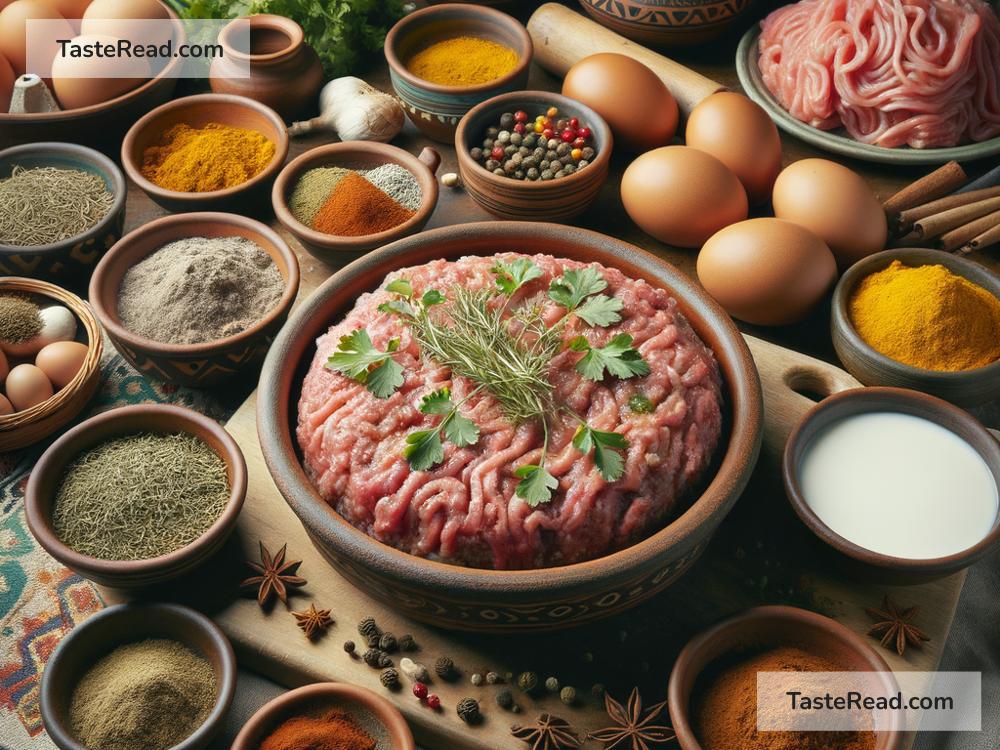Exploring the Roots of the South African Bobotie
In the diverse landscape of South African cuisine, one dish stands out for its rich history and unique flavors – Bobotie. Pronounced as “ba-boor-tea,” this traditional dish is a testament to South Africa’s multicultural heritage, blending the best of various influences into a culinary delight that has been savored for hundreds of years. But what exactly is Bobotie, and where does it come from? Let’s dive into the roots of this beloved South African dish to discover its origins, ingredients, and how it came to be a staple in homes across the nation.
A Culinary Journey from East to South
The story of Bobotie begins far from the shores of South Africa. Historians believe that the recipe originated from the Indonesian Archipelago and was brought to South Africa by the Dutch East India Company in the 17th century. These settlers, known as the Cape Malay, introduced their cooking methods and spices to their new home, creating a fusion of flavors that gave birth to Bobotie. The dish is a beautiful representation of how cultures can blend together to create something truly special.
What Makes Bobotie So Unique?
At its core, Bobotie is a comforting and hearty dish made from minced meat (usually beef or lamb), which is simmered with a mixture of spices, including curry powder, turmeric, and sometimes apricot jam or raisins for a hint of sweetness. This spiced meat is then topped with a mixture of milk and eggs and baked in the oven until it’s perfectly set. The result? A rich, flavorful, and slightly sweet dish that’s unlike anything you’ve ever tasted.
Bobotie is traditionally served with yellow rice, chutneys, coconut, banana slices, and sometimes a side of sambals, which adds to its distinctive taste and presentation. Each element complements the others, creating a balanced and satisfying meal that has won the hearts of many.
The Evolution of Bobotie
Like any traditional dish, Bobotie has undergone various transformations, adapting to available ingredients and personal tastes. While the basic concept remains the same, you’ll find that every household has its own version of Bobotie, with slight variations in the spices used, the choice of meat, or even the topping. This adaptability has allowed Bobotie to remain a beloved dish throughout the years, cherished for its comforting flavors and the memories it holds.
One fascinating aspect of Bobotie’s evolution is its recognition as a symbol of South African cuisine. In 1954, Bobotie was declared the national dish of South Africa by the United Nations Women’s Organisation, cementing its place in the country’s culinary heritage. Today, it is celebrated not just as a delicious meal but as a representation of South Africa’s rich, multicultural history.
Making Bobotie at Home
The beauty of Bobotie lies in its simplicity and the ease with which it can be made. To prepare this dish at home, start by sautéing onions and adding your minced meat, spices, and a bit of bread soaked in milk. Once the meat is cooked and seasoned to perfection, transfer it to a baking dish, cover with the egg and milk mixture, and bake until golden.
Experimenting with the ingredients allows you to put your personal touch on the dish, making it a cozy meal that reflects your taste preferences. Whether you stick to the traditional recipe or add your flair, making Bobotie at home is a delightful way to explore South African cuisine and bring a piece of its culture into your kitchen.
A Dish That Tells a Story
Bobotie is more than just a meal; it’s a narrative of migration, cultural exchange, and adaptation. It’s a reminder of how food can connect us to different cultures and bring people together, offering a taste of history in every bite. Whether you’re enjoying it in a South African home or making it in your kitchen halfway across the world, Bobotie is a dish that invites you to explore and appreciate the richness of South African culture.
So, the next time you sit down to a plate of Bobotie, remember the journey it has taken from the Indonesian Archipelago to the Cape of Good Hope, transforming along the way to become a beloved symbol of South Africa’s culinary heritage. Through its intricate flavors and comforting warmth, Bobotie tells a story of diversity, resilience, and the power of food to unite us all.


